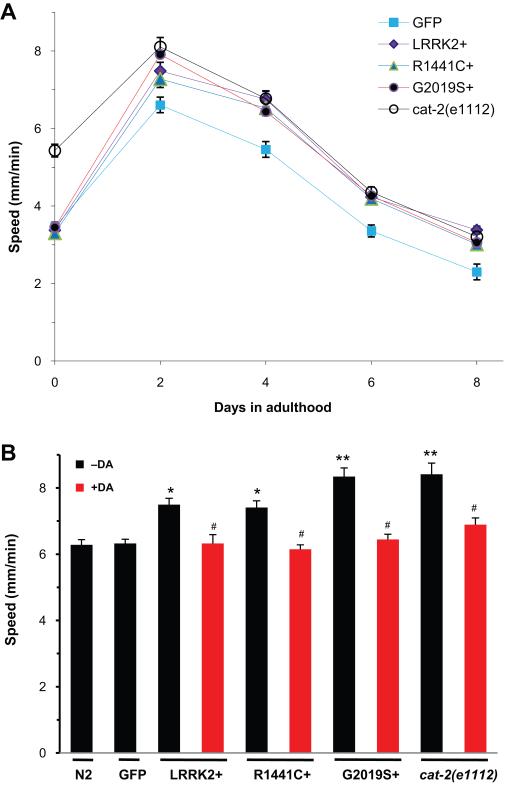Fig. 4.
LRRK2 overexpression causes locomotor dysfunction in C. elegans. (A) Transgenic C. elegans lines overexpressing GFP reporter alone or together with LRRK2 WT, R1441C and G2019S were analyzed for locomotion on adult day 0 through 8. An automated behavior tracking system was used for tracking and recording of real-time locomotor speed of C. elegans freely moving on bacterial lawn for 10 min. The average locomotor speed of 10-20 worms per each strain was plotted a function of animal age. (B) Average locomotor speed was analyzed from various C. elegans strains that were either untreated or treated for 6 h with 2 mM dopamine hydrochloride applied to bacterial food. Non-transgenic strain N2 and cat-2(e1112) mutant strain deficient for dopamine synthesis were used as controls. Error bars indicate SEM. *p<0.05 and **p<0.01 compared to the GFP control.

